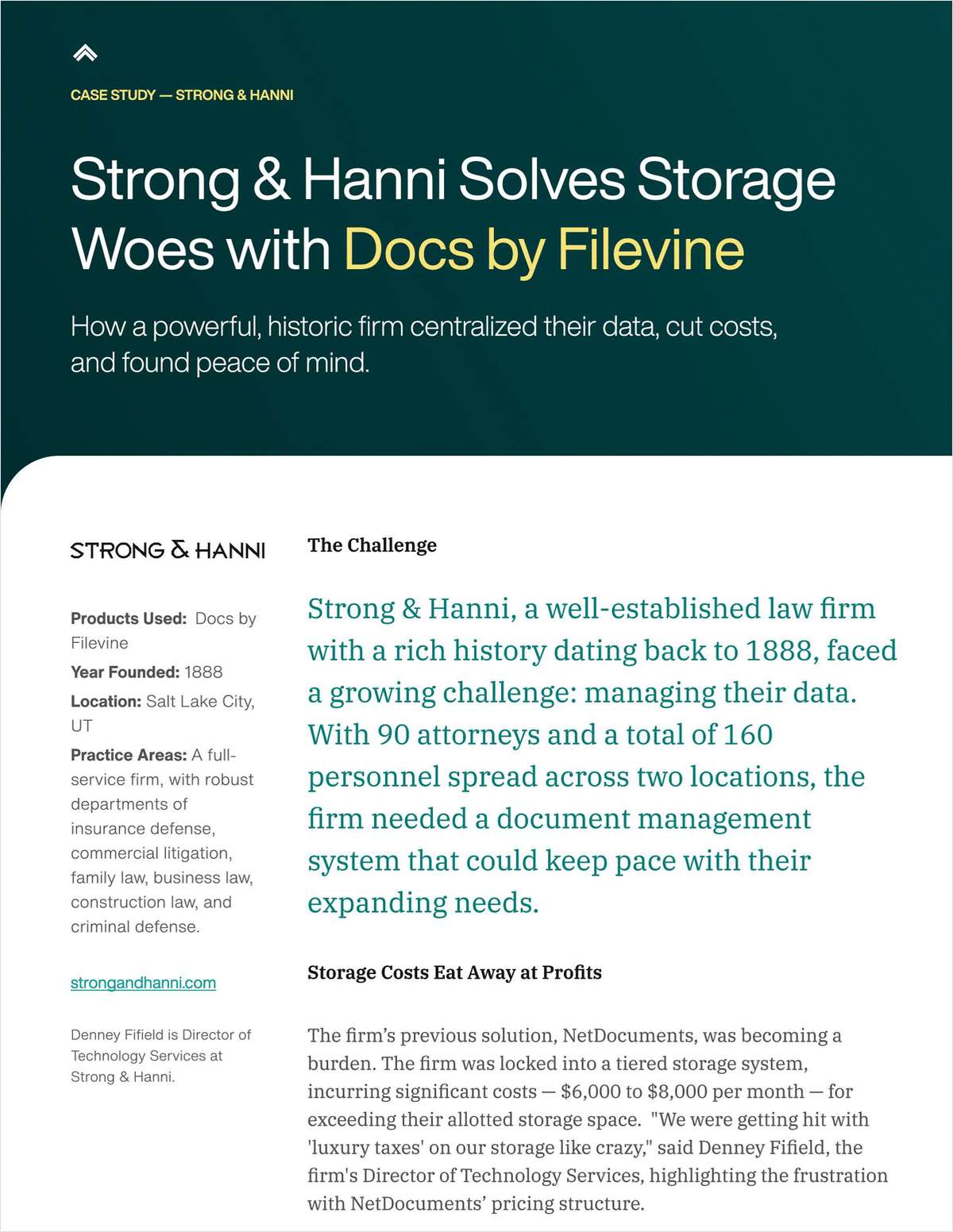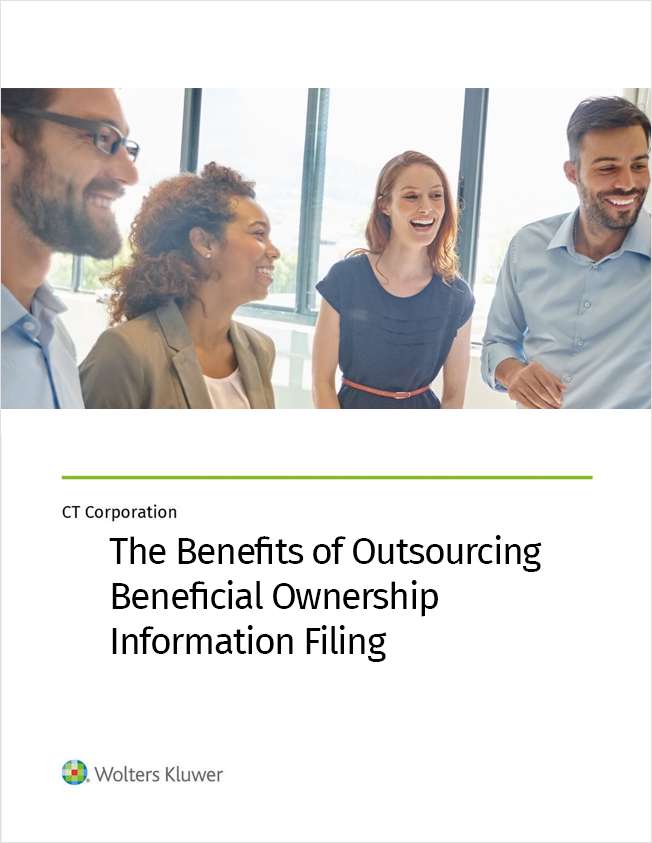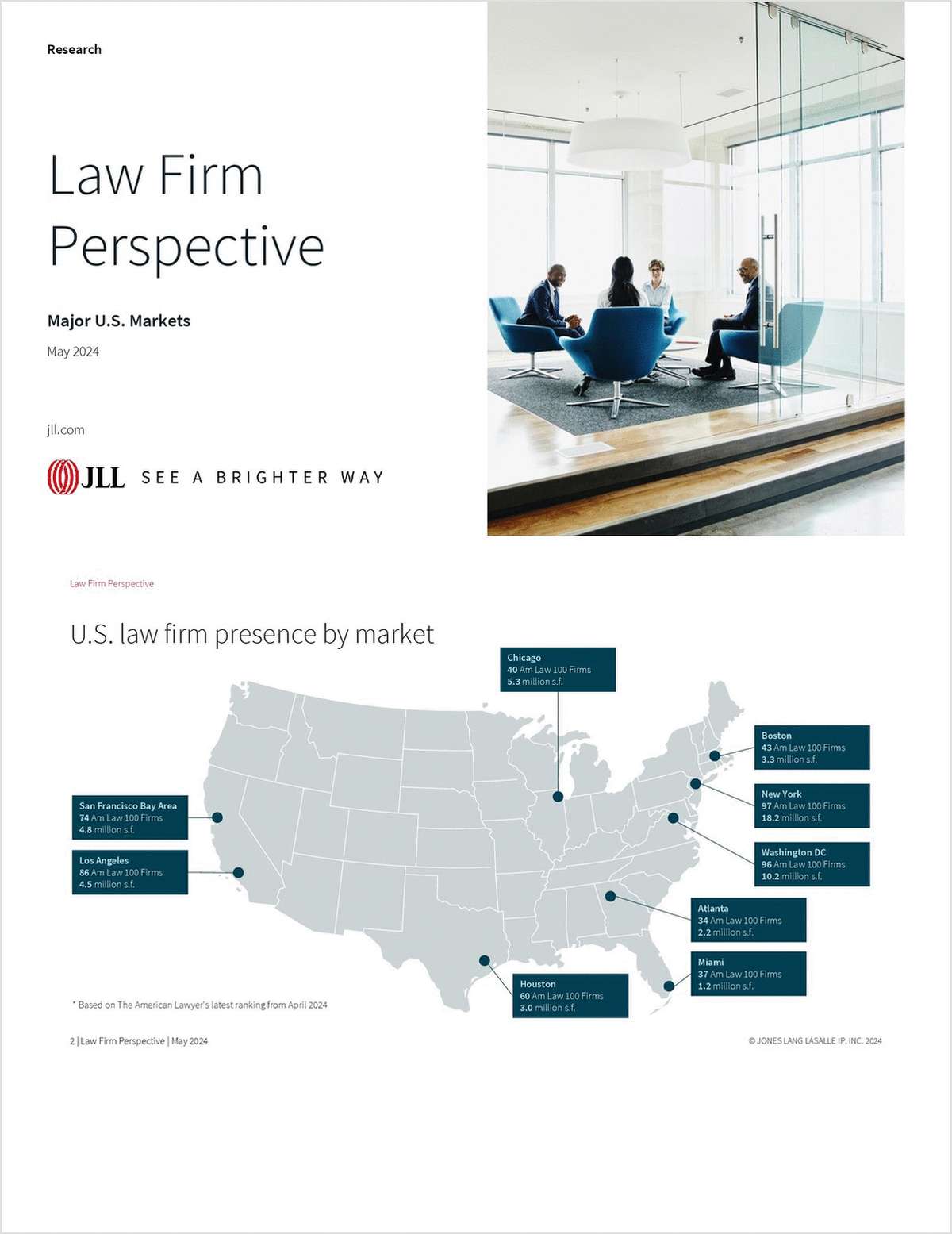 Credit: Egle Plytnikaite.
Credit: Egle Plytnikaite.Crash Course: How a Small Group of Firms Pivoted and Profited After the Recession
Firms including Cooley, Paul Weiss, McGuireWoods and King & Spalding used the Great Recession to chart a new path to success.
April 23, 2019 at 09:52 AM
13 minute read
Before 2008, most law firms could get a piece of the pie without much strategy guiding how they got it. And then the pie was gone.
The Great Recession changed the global economy and the legal industry as we knew it. In the decade since, very few firms have had a solid stream of revenue increases, Bruce MacEwen and Janet Stanton of law firm consultancy Adam Smith, Esq. say.
 Leverage the Am Law 100 data with firm comparison and key performance data, exclusively on Legal Compass. Access Premium Content
Leverage the Am Law 100 data with firm comparison and key performance data, exclusively on Legal Compass. Access Premium Content Since fiscal year 2009, only 27 of the 100 firms on the Am Law rankings have had year-over-year growth in revenue, according to ALM Intelligence data.
The firms that are pulling away share some characteristics, Stanton says. They tend to operate in a more business-like way, which means a focus on profitability, intentional planning, strategic intake and succession planning for leadership roles and client management, she says.
"From the 1980s to 2008, law land didn't have to do any of these things, so these firms that are pulling away changed their strategy," Stanton says.
These firms have been able to get it right for nearly a decade, and each had to develop a unique strategy to make it happen. To understand how a select group of firms turned the recession into an opportunity to thrive, not just survive, The American Lawyer spoke with a group of leaders who played a pivotal role in reimagining their firms' trajectories.
The firms that have delivered year-over-year growth since the 2009 fiscal year include: Akin Gump Strauss Hauer & Feld; Baker & Hostetler; Barnes & Thornburg; Cooley; Davis Polk & Wardwell; Duane Morris; Fox Rothschild; Fragomen, Del Rey, Bernsen & Loewy; Gibson, Dunn & Crutcher; Goodwin Procter; Holland & Knight; Jackson Lewis; King & Spalding; Kirkland & Ellis; Latham & Watkins; McGuireWoods; Milbank; Morgan, Lewis & Bockius; Ogletree, Deakins, Nash, Smoak & Stewart; Paul, Weiss, Rifkind, Wharton & Garrison; Perkins Coie; Polsinelli; Proskauer Rose; Ropes & Gray; Sheppard, Mullin, Richter & Hampton; Simpson Thacher & Bartlett; and Williams & Connolly.
|California Hustle
Joe Conroy became CEO of Cooley in January 2008. In his first address at a partner meeting, he laid out his plans for the Silicon Valley firm's aggressive growth strategy that included a global footprint and other truisms—or at least what he thought were truisms.
"They didn't throw rotten fruit at me, but it's because they didn't have rotten fruit," Conroy says. "They weren't really buying it."
But he had a fundamental concept he wanted to instill in the minds of the firm's partners: The recession, for however long it would last, presented an opportunity.
Conroy joined the firm in 1999, immediately ahead of the dot-com crash that "should've, candidly, killed a firm that was configured the way our firm was configured," he recalls.
 Joe Conroy
Joe Conroy
But after the crash, Cooley began rebuilding, trying to dispel the notion that it was simply a West Coast firm. Its strategy—if it had one back then—was to be a better tech firm, Conroy says. It invested in its vibrant emerging companies and life sciences practices and worked with venture capital funds, including fund formation and investment deals. It also looked to invest in its East Coast operations, leading to a 2006 merger with New York litigation boutique Kronish Lieb Weiner & Hellman that created Cooley Godward Kronish, a 550-lawyer national firm.
The firm was cruising along, with its revenue jumping over 44 percent from 2006 to 2007. But when the recession hit, it hit Cooley, like most other firms, hard. Revenue fell 8.2 percent and profits per partner tumbled 11.4 percent from 2008 to 2009. But as Conroy assumed leadership of the firm, he remained steadfast in his conviction that the firm needed to use the recession to separate itself from the pack.
"For us to succeed, we didn't need to outrun the bear," Conroy says. Cooley just needed to outrun its competition.
 The recession was the tipping point for bifurcation in the legal industry, and the number of firms that could ably compete for the best business was about to shrink, Conroy says. Cooley developed a strategy of becoming "elite and distinctive"—elite in its finances, branding, clients and geographical coverage, and distinctive in its focus on tech, life sciences and venture capital. And, more important, Conroy adds, it would set itself apart in its representation of high-growth, innovative companies, safe in the knowledge that partnering with the biggest and most powerful companies in the world would allow the firm not only to stay at the forefront of growing fields, but to pedal back as the point of entry into big-ticket work, Conroy says.
The recession was the tipping point for bifurcation in the legal industry, and the number of firms that could ably compete for the best business was about to shrink, Conroy says. Cooley developed a strategy of becoming "elite and distinctive"—elite in its finances, branding, clients and geographical coverage, and distinctive in its focus on tech, life sciences and venture capital. And, more important, Conroy adds, it would set itself apart in its representation of high-growth, innovative companies, safe in the knowledge that partnering with the biggest and most powerful companies in the world would allow the firm not only to stay at the forefront of growing fields, but to pedal back as the point of entry into big-ticket work, Conroy says.
That strategy has paid dividends. Since 2009, gross revenue at Cooley has grown nearly 142 percent. Net income has ballooned 168 percent. Revenue per lawyer is up 61 percent. The firm has grown its partnership ranks by nearly half, and still more than doubled its profits per partner in the process.
"This firm is based on hustle," Conroy says. "We've got this business development gene in our DNA and there's this real affinity for the collective rather than the individual."
|The Wall Street Warrior
Like Conroy, Brad Karp stepped into his role as chairman of New York City-based Paul, Weiss, Rifkind, Wharton & Garrison just a few months before Lehman Brothers filed for bankruptcy in September 2008. But Karp was in a much different position.
 Brad Karp. Photo: David Handschuh/ALM.
Brad Karp. Photo: David Handschuh/ALM.
The firm represented—and continues to represent—several of the largest financial institutions that in 2008 were under siege as a result of the global financial collapse. Its litigation team served as lead counsel to JPMorgan Chase/Bear Stearns in lawsuits stemming from the global investment bank's collapse. It defended Bank of America in litigation surrounding its $50 billion merger with Merrill Lynch in 2008. And it also represented Citigroup Inc. in subprime- and credit-related cases, as well as the investment bank's involvement in the Enron and Parmalat fraud cases.
"Our firm had record-breaking levels of activity during the financial crisis," Karp says. "Our litigators and white-collar defense lawyers, in particular, worked around the clock for years, handling massive investigative matters and litigations for our Wall Street bank clients."
All that work generated a lot of revenue. The firm took the capital and invested it in its five core practice areas.
"Our goal was to develop market-leading practices in litigation, white-collar defense, public M&A, private equity and restructuring. To achieve this, we needed to make some bold strategic investments and wisely deploy some of the capital we had created," Karp says.
The investment reflected a larger plan implemented by Karp at the beginning of his tenure.
"One of my first actions as chair, back in 2008 and 2009, was to shift resources away from certain niche practices and geographic regions that were peripheral to our strategy and to focus our energies on mission-critical, client-centric practices for a firm centered in New York and Washington," he says.
The firm was able to do it, he says, because "our profitability was soaring at a time when industry profits were plummeting."
 Growing client demand also allowed Paul Weiss to make strategic investments in its partnership ranks at a time when most other firms were shrinking ranks. Since 2009, the firm has grown its partnership by 25 percent. Over the same time period, its Wall Street peers—Cravath, Swaine & Moore; Cadwalader, Wickersham & Taft; Davis Polk & Wardwell; Sullivan & Cromwell; and Wachtell, Lipton, Rosen & Katz—have all decreased their partnerships.
Growing client demand also allowed Paul Weiss to make strategic investments in its partnership ranks at a time when most other firms were shrinking ranks. Since 2009, the firm has grown its partnership by 25 percent. Over the same time period, its Wall Street peers—Cravath, Swaine & Moore; Cadwalader, Wickersham & Taft; Davis Polk & Wardwell; Sullivan & Cromwell; and Wachtell, Lipton, Rosen & Katz—have all decreased their partnerships.
"We needed to be certain that we had the necessary resources, especially at the partner level, to handle the work at the highest possible level and impress our clients. This required us to bring in additional talent and invest in the partnership," Karp says. "Pursuing this strategy, at that time, was unconventional."
And adding to the partnership in the firm's core areas has been critical ever since, Karp notes. In the years following the recession, the firm made high-profile additions like top Cravath dealmaker Scott Barshay and Kirkland & Ellis bankruptcy star Paul Basta.
"Our goal is to be the go-to firm, the safe choice, for the most important companies in the world, on their most important matters, where the stakes are highest," Karp says.
|A Southern Success
King & Spalding chairman Robert Hays led off the firm's year-end partnership meeting reading from a memorandum sent 10 years ago announcing personnel moves made because of the global financial crisis.
 "I used that as a caution to say that's something we don't want to do again, and we don't want to be in a position to do again," says Hays, who took over leadership of the firm in 2006.
"I used that as a caution to say that's something we don't want to do again, and we don't want to be in a position to do again," says Hays, who took over leadership of the firm in 2006.
Historically tied to Atlanta, King & Spalding was in the midst of transforming into a major national and international firm. Then the recession hit.
The firm's relatively thin capital compared with debt at that time was a challenge, Hays says. Strapped with $100 million in debt accrued before Hays became chair, the total quickly ballooned as clients struggled to pay their bills.
"You are so closely tied—and should be—to your clients, and that was an absolute nuclear winter for the industry and the whole economy," Hays says.
This content has been archived. It is available through our partners, LexisNexis® and Bloomberg Law.
To view this content, please continue to their sites.
Not a Lexis Subscriber?
Subscribe Now
Not a Bloomberg Law Subscriber?
Subscribe Now
NOT FOR REPRINT
© 2024 ALM Global, LLC, All Rights Reserved. Request academic re-use from www.copyright.com. All other uses, submit a request to [email protected]. For more information visit Asset & Logo Licensing.
You Might Like
View All

As Tech-Focused Roles in C-Suite Expand, Newcomers Embrace Big Law Opportunities

Trending Stories
- 1Infant Formula Judge Sanctions Kirkland's Jim Hurst: 'Overtly Crossed the Lines'
- 2Trump's Return to the White House: The Legal Industry Reacts
- 3Election 2024: Nationwide Judicial Races and Ballot Measures to Watch
- 4Climate Disputes, International Arbitration, and State Court Limitations for Global Issues
- 5Judicial Face-Off: Navigating the Ethical and Efficient Use of AI in Legal Practice [CLE Pending]
- 6How Much Does the Frequency of Retirement Withdrawals Matter?
Who Got The Work
Michael G. Bongiorno, Andrew Scott Dulberg and Elizabeth E. Driscoll from Wilmer Cutler Pickering Hale and Dorr have stepped in to represent Symbotic Inc., an A.I.-enabled technology platform that focuses on increasing supply chain efficiency, and other defendants in a pending shareholder derivative lawsuit. The case, filed Oct. 2 in Massachusetts District Court by the Brown Law Firm on behalf of Stephen Austen, accuses certain officers and directors of misleading investors in regard to Symbotic's potential for margin growth by failing to disclose that the company was not equipped to timely deploy its systems or manage expenses through project delays. The case, assigned to U.S. District Judge Nathaniel M. Gorton, is 1:24-cv-12522, Austen v. Cohen et al.
Who Got The Work
Edmund Polubinski and Marie Killmond of Davis Polk & Wardwell have entered appearances for data platform software development company MongoDB and other defendants in a pending shareholder derivative lawsuit. The action, filed Oct. 7 in New York Southern District Court by the Brown Law Firm, accuses the company's directors and/or officers of falsely expressing confidence in the company’s restructuring of its sales incentive plan and downplaying the severity of decreases in its upfront commitments. The case is 1:24-cv-07594, Roy v. Ittycheria et al.
Who Got The Work
Amy O. Bruchs and Kurt F. Ellison of Michael Best & Friedrich have entered appearances for Epic Systems Corp. in a pending employment discrimination lawsuit. The suit was filed Sept. 7 in Wisconsin Western District Court by Levine Eisberner LLC and Siri & Glimstad on behalf of a project manager who claims that he was wrongfully terminated after applying for a religious exemption to the defendant's COVID-19 vaccine mandate. The case, assigned to U.S. Magistrate Judge Anita Marie Boor, is 3:24-cv-00630, Secker, Nathan v. Epic Systems Corporation.
Who Got The Work
David X. Sullivan, Thomas J. Finn and Gregory A. Hall from McCarter & English have entered appearances for Sunrun Installation Services in a pending civil rights lawsuit. The complaint was filed Sept. 4 in Connecticut District Court by attorney Robert M. Berke on behalf of former employee George Edward Steins, who was arrested and charged with employing an unregistered home improvement salesperson. The complaint alleges that had Sunrun informed the Connecticut Department of Consumer Protection that the plaintiff's employment had ended in 2017 and that he no longer held Sunrun's home improvement contractor license, he would not have been hit with charges, which were dismissed in May 2024. The case, assigned to U.S. District Judge Jeffrey A. Meyer, is 3:24-cv-01423, Steins v. Sunrun, Inc. et al.
Who Got The Work
Greenberg Traurig shareholder Joshua L. Raskin has entered an appearance for boohoo.com UK Ltd. in a pending patent infringement lawsuit. The suit, filed Sept. 3 in Texas Eastern District Court by Rozier Hardt McDonough on behalf of Alto Dynamics, asserts five patents related to an online shopping platform. The case, assigned to U.S. District Judge Rodney Gilstrap, is 2:24-cv-00719, Alto Dynamics, LLC v. boohoo.com UK Limited.
Featured Firms
Law Offices of Gary Martin Hays & Associates, P.C.
(470) 294-1674
Law Offices of Mark E. Salomone
(857) 444-6468
Smith & Hassler
(713) 739-1250











